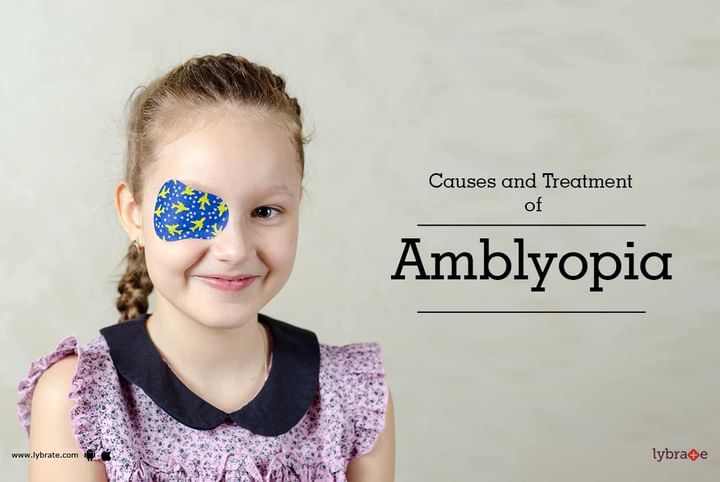Causes and Treatment of Amblyopia
What is amblyopia or lazy eye? Amblyopia is decreased vision in one or both eyes due to abnormal development of vision in infancy or childhood. In amblyopia, there may not be an obvious problem of the eye. Vision loss occurs because nerve pathways between the brain and the eye aren't properly stimulated. The brain, learns to see only blurry images with the amblyopic eye even when glasses are used. As a result, the brain favors one eye, usually due to poor vision in the other eye. Another word for amblyopia is 'lazy eye'. It is the leading cause of vision loss amongst children.
The major causes of Amblyopia are as follows:
- Eye Misalignment: The most basic reason for amblyopia is misalignment of the eyes. In case, both your eyes are not aimed in the same proportion or direction, the image from the affected eye is turned off by the brain. Only the better eye functions. Double vision is restricted. The persistence of this defect for a prolonged time, makes the eye lose connection with the brain's visual cortex. Amblyopia develops.
- Imbalanced error of refraction: If the refractive blunder of both the eyes is not the same, both eyes can't be in the center at the same time. Amblyopia happens when one eye stays out of the center since it is more myopic, farsighted, or astigmatic than the other. One eye becomes dominant. This results in the neglect of the unfocused eye, which neglects to associate with the mind. Treatment with glasses or contact lenses to adjust the refractive blunder of the eye is required.
- Cloudiness in the visual system: Any kind of obstruction or cloudiness in the normal functioning of the eye tissues can be another reason, which leads to amblyopia. Disorder of any kind which blocks a clear image from being focused is capable of blocking the formation of a clear image on your retina. This may lead to amblyopia. This is perhaps the most severe type of this disease.
How to cure amblyopia?
For treating amblyopia, a child must be compelled to utilize his affected, weaker eye. This can be done by correction of any disorder of the affected eye such as refractive error, problems in the retina, etc. The goal is to correct the amblyopic eye. The normal eye is usually covered up by a patch, so that only the affected eye can be used for vision. The patching up may continue for weeks, months or years until the best vision gets restored. The improving eye should be maintained well. Spectacles are also prescribed for correction of errors regarding refraction. Eye drops such as atropine are also used for blurring the vision of the good eye. Amblyopia makes you visually impaired. The earliest symptoms must be perceived and acted upon.



+1.svg)
